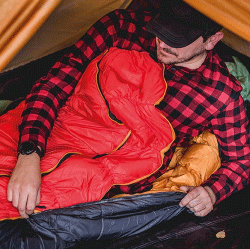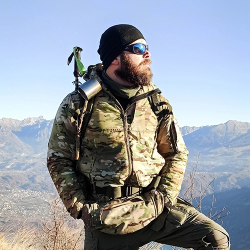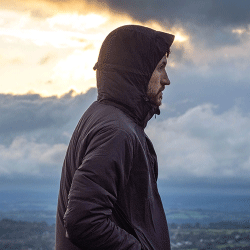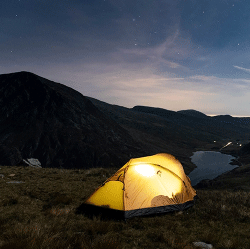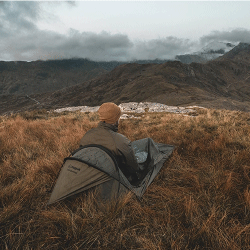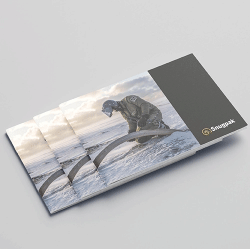

How Do I Prepare For Winter Camping?
Winter ventures can provide some of the most amazing journeys, with fantastic views, clear skylines and the wonderful sound of snow and ice crunching under your feet. However, winter travel, and camping, whilst great fun, can also be life threatening. The critical issue for anyone moving outside in the winter months, is to plan your route carefully, ensure you have the correct equipment for the environment, terrain and weather, and always ensure you have enough food and water, including hot drinks.
In terms of pre-venture planning, it covers a lot of areas:
- What is your objective?
- What environment are you travelling into?
- What will the terrain be like?
- How high are you going to travel?
- Have you anticipated the weather?
- How many are in your group and what is their ability?
All of these factors will determine the type of route you want to take, as well as the length of time you want to spend outdoors. Remember that in the winter months, days are getting longer after the Solstice in December, but days are still relatively short, and temperatures can drop considerably when you are in the hills, and it is a lot colder, even if you are only a few hundred metres above sea level. Take the time to look at your planned route before you leave, either using a published Ordnance Survey map sheet, or online digital mapping.
Once the trip has been sufficiently planned, attention needs to be turned to the correct equipment. Firstly, insulation strategy is a must. Correct thermal regulation needs to be managed, so appropriate levels of insulation will be required throughout the day. Adopting a correct layering principle to your clothes, starting with clean and dry skin, is essential. Next a lightweight base layer will pull moisture away from your skin, then a fleece or other warm later can be added if you get too cold. The main part of your clothing is formed from your insulation layer, such as the Softie ML6, which creates the main insulation that traps warm air. Finally, a good waterproof jacket and trousers will be required. For trousers, over the top of a base layer, lightweight heat soft-shell or insulation layers are recommended, with a pair of waterproof over-trousers if required.
For your head, appropriate insulation is needed, or even a balaclava in more extreme conditions. Good quality gloves or mittens retain heat for the hands Again, the layering technique can be used here, with thin base layer fleece gloves being worn next to the skin and mittens or bigger gloves over the top. Always carry spares of gloves and hats, especially if they are not waterproof.
Footwear can make or break any venture, and suitable walking or mountain boots, preferably B1 or B2 rated will be required, especially if you are using crampons. Make sure your boots feet over correctly fitting socks, and if necessary use a liner sock as well as a thicker insulating sock.
Snow and Ice remain critical factors, either when deliberately planning to walk along well defined routes and paths or moving onto more adventurous and remote environments. Well established routes can become impassable due to a build up of snow and making progress, either forward on in retreat can lead to problems if there is considerable ice under foot. Any venture where there is a risk of snow and ice, the use of a walking ice axe and crampons are essential; do not leave home without them.
Sufficient food, high in carbohydrates, and extra clothing layers and will need to be carried, as well as additional safety equipment such as a first aid kit, and possibly ropes, so choose the correct pack for the job. A suitable pack of around 25-30L is sufficient for most single days, with larger expedition packs required for overnight camps and expeditions. For any excursion in winter climates, you are going to be carrying more equipment than usual, so make sure you are used to carrying larger packs, and ensure all your equipment is packed efficiently for the type of movement you are planning.
You will need to take some form of shelter with you, either in the form of a bothy bag, ranging in size from 2-4 people, up to larger ones for groups. They can be absolute lifesavers if you need to remain static for any period of time, such as during food breaks, or if you need to add/change clothing layers. Alternatively, you can use tents specifically constructed for winter use.
Tents can be lightweight and robust for the planned weather conditions and once inside the tent, the right sleeping bag and insulation mat is a must and you should refer to the guidelines of what makes the best sleeping bag for the temperatures you’ll be facing. You insulation mat needs to protect you from heat loss into the ground, and in extreme cases, you may need more than one!
Once you have planned your objective and route, the right food and cooking utensils need to be carried. Generally, a stove could be taken, or alternatively chemical heat packs are a good alternative, but lack the ability to make hot water! A good quality flask for storing hot drinks is also essential – don’t forget the hot chocolate and make sure you stay hydrated – you may not notice it, but you will still need the same amount of water, even though it is colder. Never eat snow or ice directly, as this rapidly cools you from the inside and can cause life-threatening hypothermia.
Carry enough food to cover your expected energy consumption per day, even for low level walks you could consume over 5,000 calories per person, per day and carry a little in reserve; eat little and often to maintain energy levels.
There is a lot to plan for whenever heading out into the hills over winter, but the better prepared you are the more enjoyable your trip will be! Don’t forget your camera, and see if you can photograph that elusive cloud angel from the summit!
Are you a winter adventurist? Send us your tips and advice. And we’re always looking for pictures! Don’t forget to send them to us @Snugpak and on Facebook.

